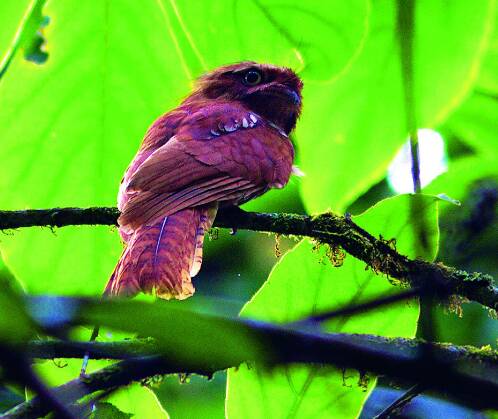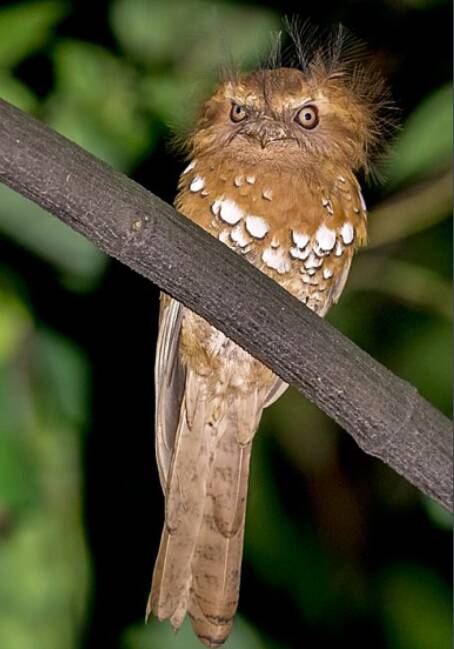Batrachostomus hodgsoni
IUCN
LCBasic Information
Scientific classification
- name:Batrachostomus hodgsoni
- Scientific Name:Hodgson's Frogmouth,Batrachostomus hodgsoni
- Outline:Climbing birds
- Family:Nighthawks Frogmouth Frogmouth
Vital signs
- length:About 24 cm
- Weight:
- lifetime:
Feature
The whole body feathers are covered with black-brown, brown and white moth-like markings.
Distribution and Habitat
There are records in Yunnan, China. It is distributed in India, Bangladesh, Indochina, etc. abroad.
The black-capped frogmouth is nocturnal. During the day, it lives in evergreen broad-leaved forests and secondary forests below 2,000 meters, lying or standing on the horizontal branches of large tree trunks.
Appearance
The bill is broad and thick, with a curved upper bill and a hooked tip. The base of the bill has long whisker-like feathers. There is a white collar on the back of the neck. The tail is long and convex. The male has a short white eyebrow and the whole body is mottled with black-brown, brown-red and white. The female has a brown upper body and a white throat. There are large white spots on the chest and shoulders. The iris is orange-yellow, the beak is yellow, and the feet are flesh-colored.
Details
The black-capped frogmouth is a small bird. It is similar in shape to a nighthawk. It often moves alone or in pairs. It is nocturnal and hides in dense forests during the day, lying or standing on horizontal branches along the trunks of large trees. Because its body color is similar to that of branches, it is generally difficult to find without paying attention. Sometimes it perches on small branches in an upright posture. It only starts to move and hunt at night and dusk. It flies lightly and without any sound. It mainly feeds on insects and also eats small rodents.

The breeding season is mainly from April to June, the earliest in late March, the latest in late August. Usually nesting in mountain forests at an altitude of 400-2000 meters, especially in steep mountain valleys. The nest is mostly placed on the horizontal branches of small trees, 1.5-5 meters above the ground. The nest is made entirely of down feathers and fine feathers plucked from the female bird's abdomen, with a diameter of 6-9 cm, a depth of 2 cm, and a slight concave in the middle. The nesting materials are often deeply inserted into the cracks of the bark, and the outside of the nest is fixed tightly together with mosses, lichens and spider egg bags, so the nest is not only quite strong, but also looks like a tumor-like protrusion growing on the tree itself. Usually 2 eggs are laid per nest, sometimes as few as 1. The eggs are white, smooth and spotless, long oval or oval, and the size is 24.4-28.1 mm × 16.3-19.5 mm, with an average of 26.5 mm × 17.6 mm. The male and female birds take turns to incubate the eggs, the male usually incubates the eggs during the day, and the female incubates the eggs at night. The chicks are late-maturing.

Listed in the "Red List of Threatened Species of the World Conservation Union" (IUCN) 2016 ver 3.1 - Least Concern (LC).









